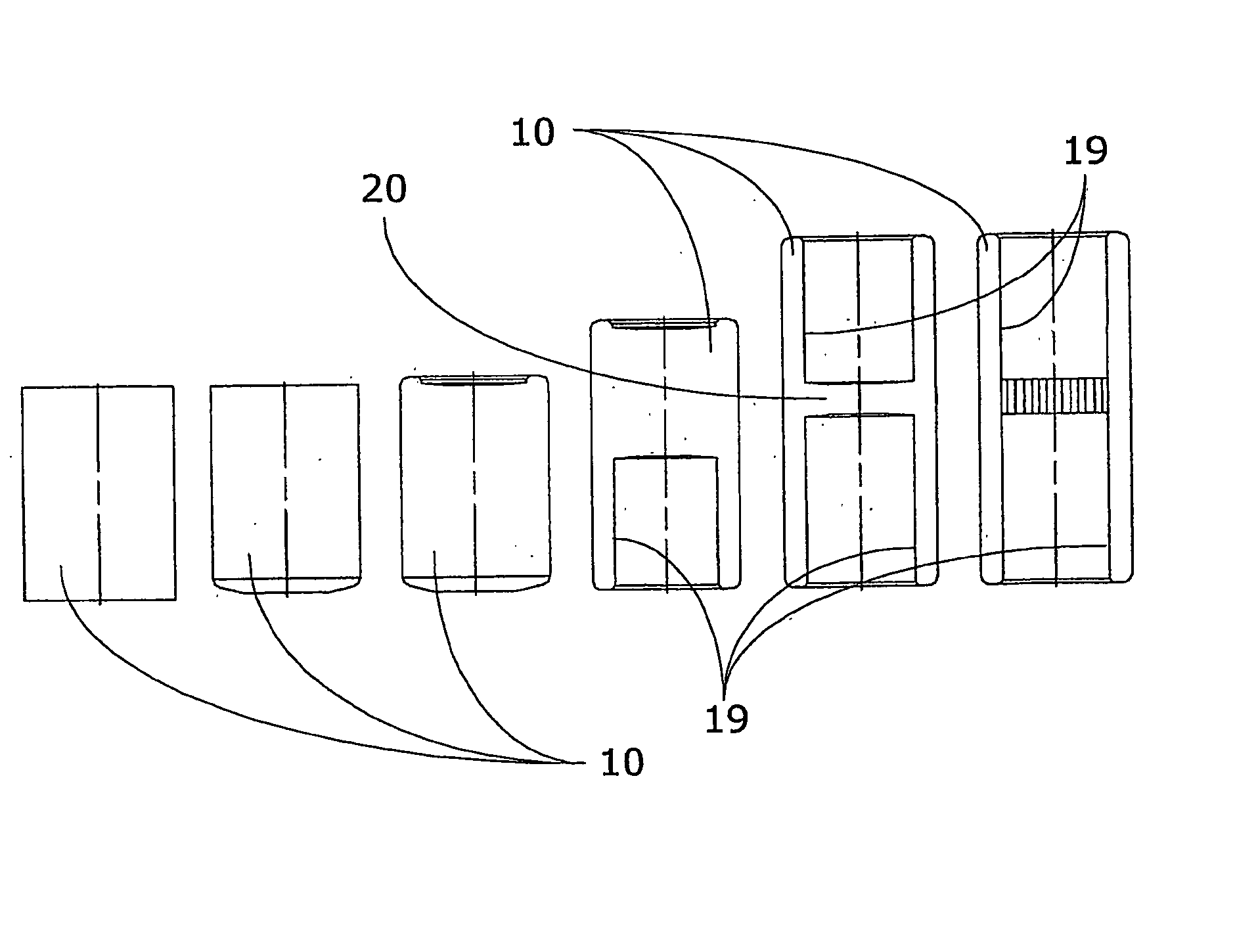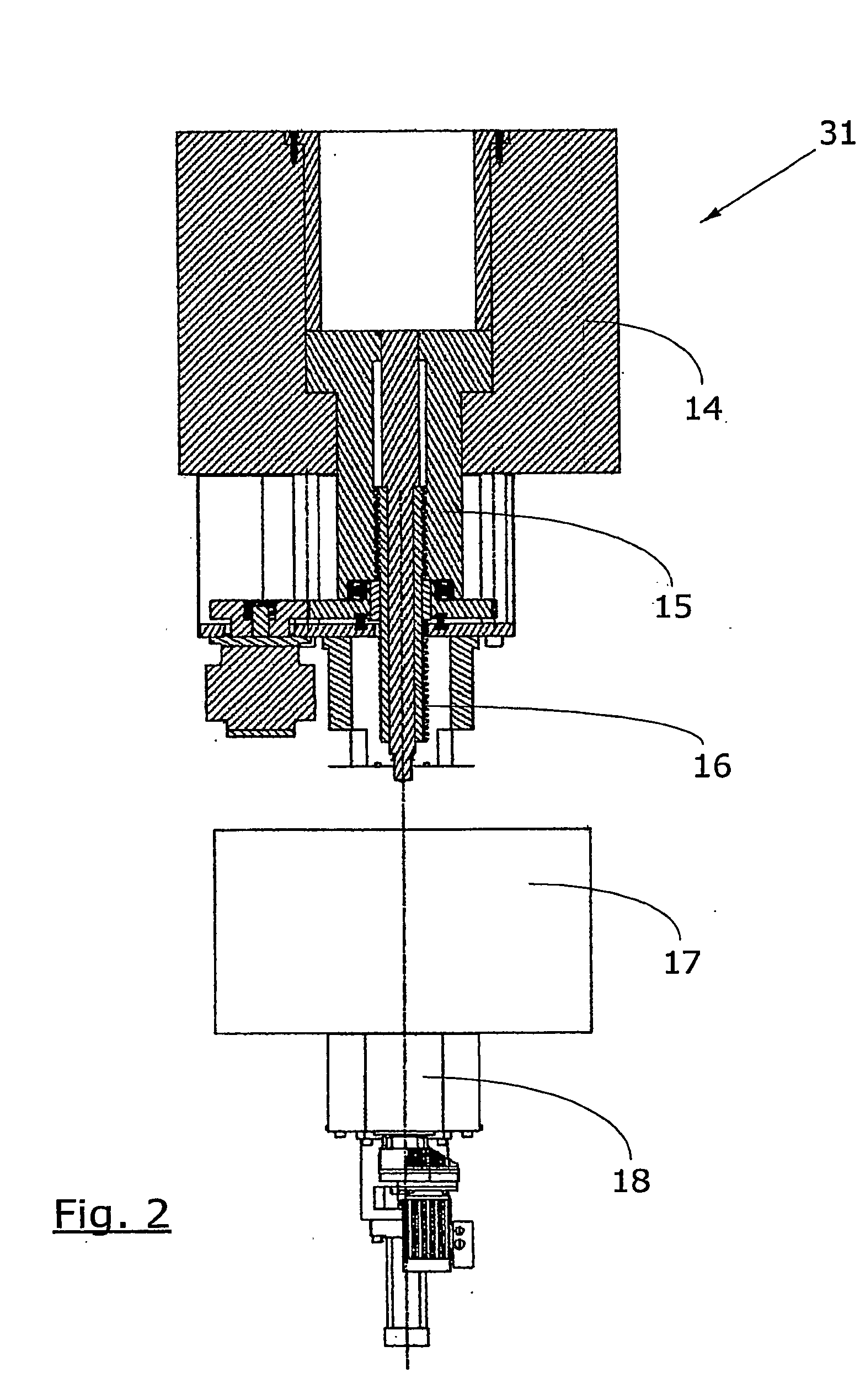Methods for the cold extrusion of metallic elements with dead or through holes and plant for carrying out said methods
a technology of cold extrusion and metallic elements, which is applied in the direction of forging presses, forging/pressing/hammering equipment, handling devices, etc., can solve the problems of short life of horizontal presses, high investment cost, and increase in piece temperature that can exceed 700 degrees
- Summary
- Abstract
- Description
- Claims
- Application Information
AI Technical Summary
Benefits of technology
Problems solved by technology
Method used
Image
Examples
Embodiment Construction
[0029] This invention proposes to provide a first procedure for obtaining metal elements such as for example bushings, nuts or other products with dead or through holes, etc., which can eliminate or significantly reduce the drawbacks described above.
[0030] This invention also proposes to provide a second procedure for obtaining metal elements such as for example screws, standard or special shape extruded or pressed products, etc., with a diameter greater than 30 mm, which can be easily produced in order to be economically advantageous.
[0031] According to a first aspect, the procedure for obtaining tubular metal elements such as for example bushings, nuts or other products with dead or through holes, etc., according to the invention, foresees: [0032] setting up and preparation of a blank in rolls or bars of full metal material; [0033] straightening in the case of rolls and cutting of the metal material into pieces of a determined length; [0034] pressing in sequence achieved by pass...
PUM
| Property | Measurement | Unit |
|---|---|---|
| Length | aaaaa | aaaaa |
| Size | aaaaa | aaaaa |
| Energy | aaaaa | aaaaa |
Abstract
Description
Claims
Application Information
 Login to View More
Login to View More - R&D
- Intellectual Property
- Life Sciences
- Materials
- Tech Scout
- Unparalleled Data Quality
- Higher Quality Content
- 60% Fewer Hallucinations
Browse by: Latest US Patents, China's latest patents, Technical Efficacy Thesaurus, Application Domain, Technology Topic, Popular Technical Reports.
© 2025 PatSnap. All rights reserved.Legal|Privacy policy|Modern Slavery Act Transparency Statement|Sitemap|About US| Contact US: help@patsnap.com



